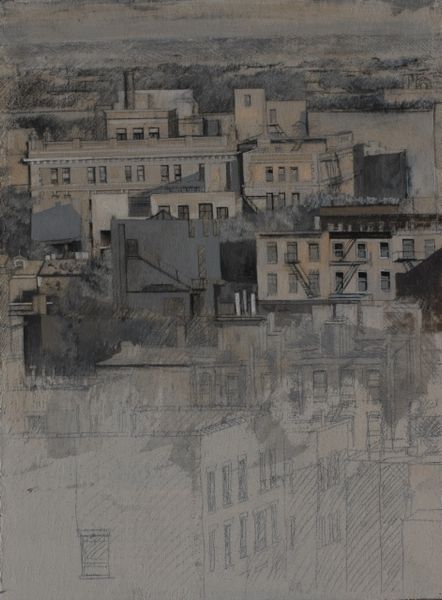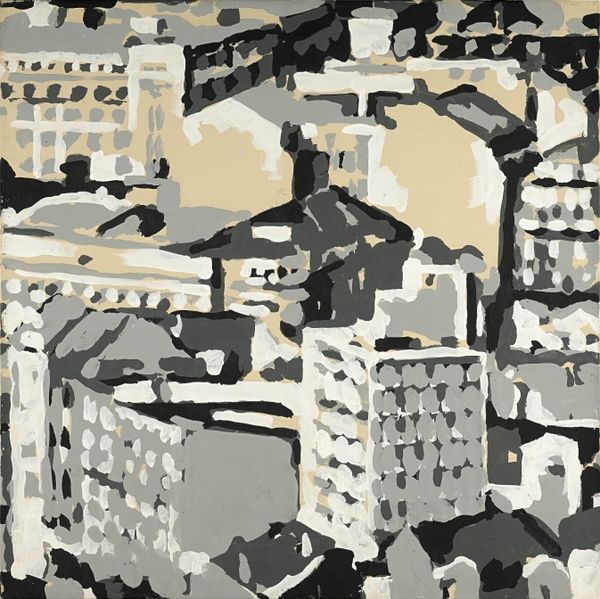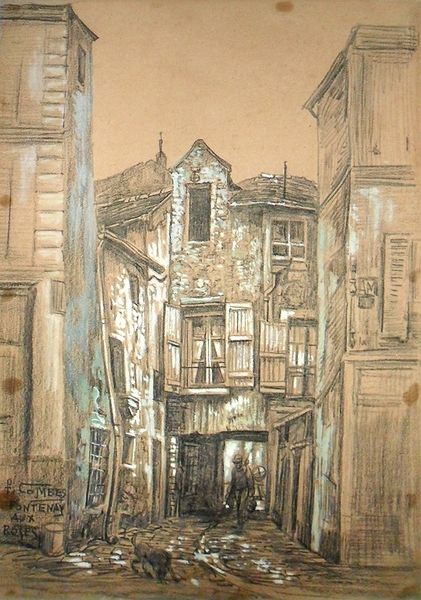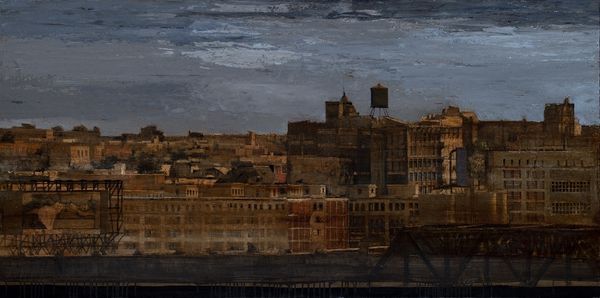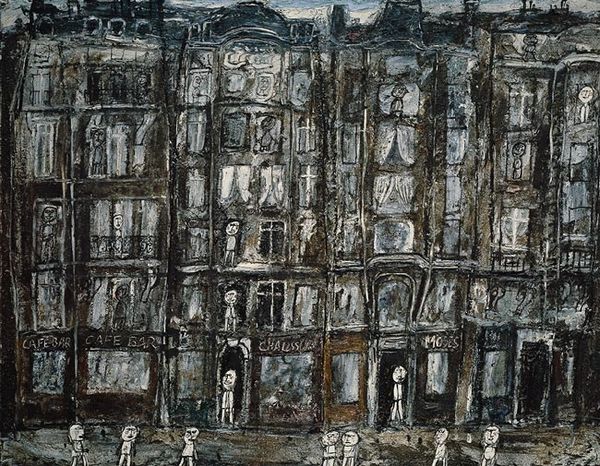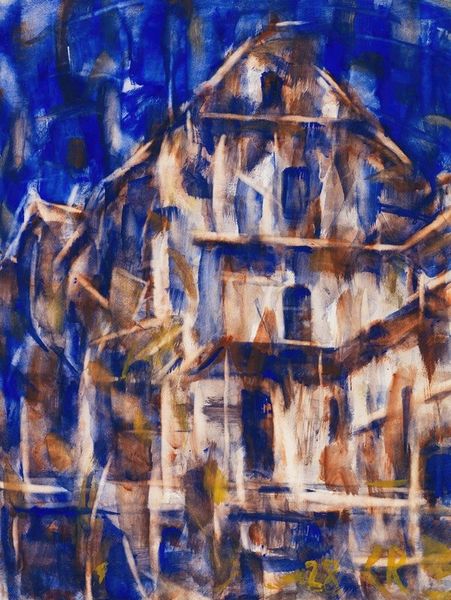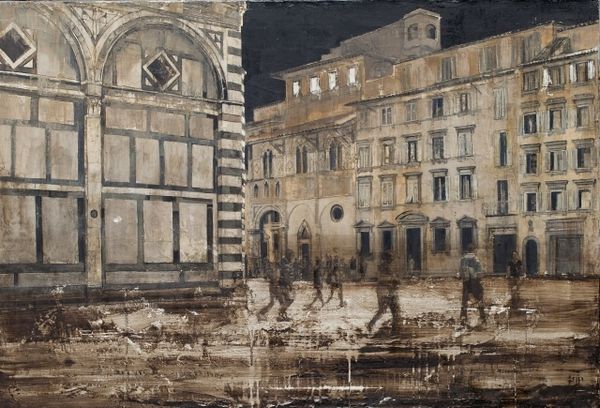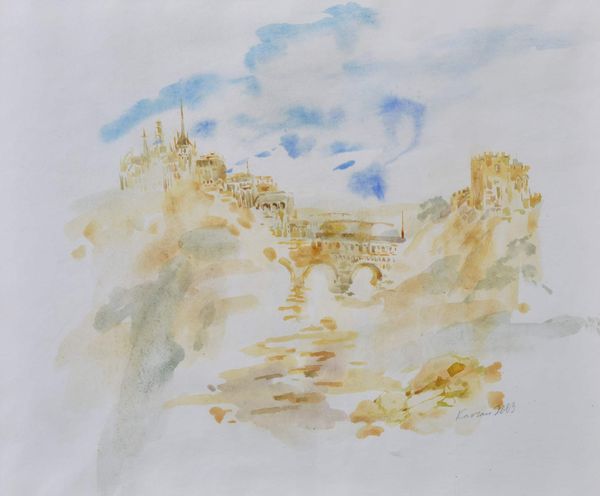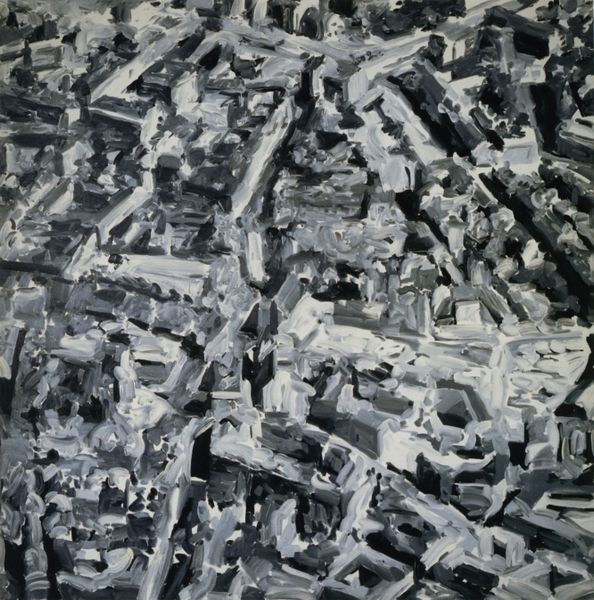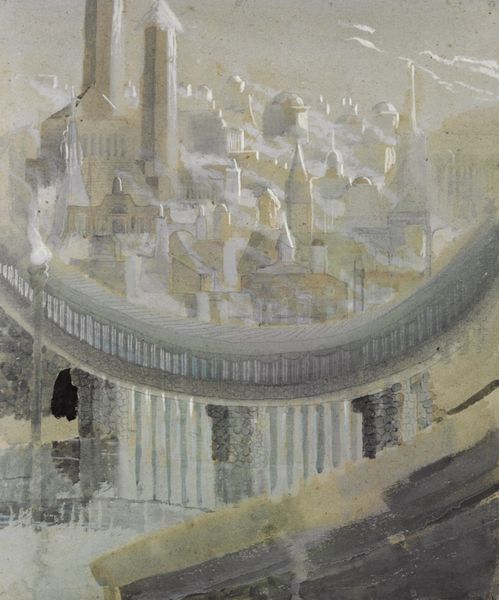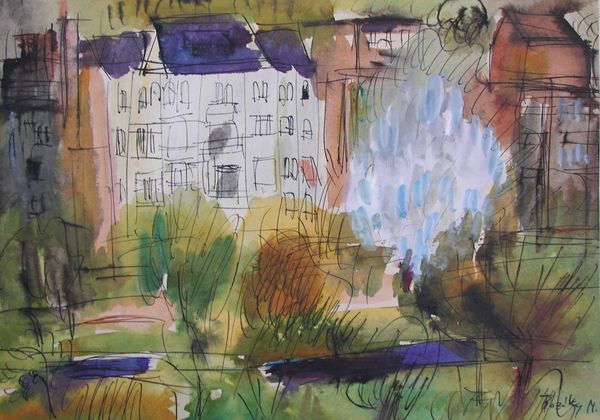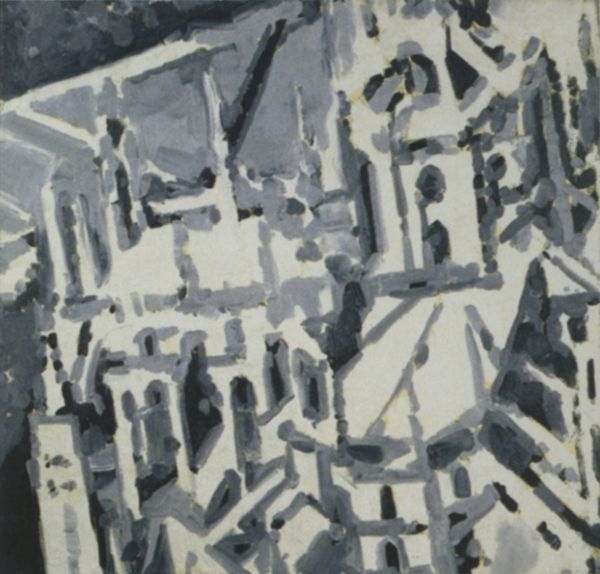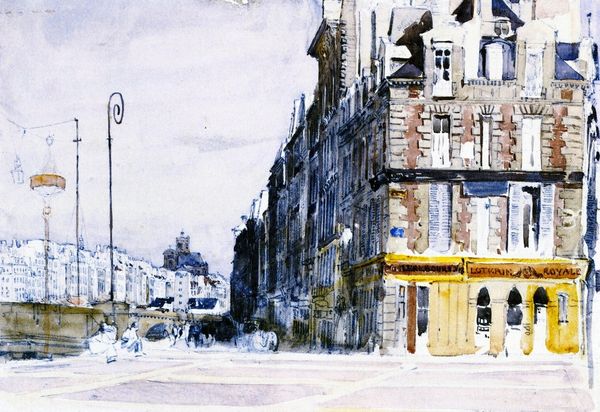
painting, plein-air, impasto
#
painting
#
plein-air
#
impasto
#
cityscape
#
modernism
#
realism
Dimensions: 160 x 160 cm
Copyright: Pietropoli Patrick,Fair Use
Editor: Patrick Pietropoli's "Grande Vue De Paris," painted in 2010, really captures this density of urban architecture in what seems like oil paints. It is a private collection painting, done *en plein air* with visible *impasto*, and presents a realism/modernist blend. The composition really directs the gaze upwards and then back into itself. How would you interpret this piece? Curator: For me, the immediate question this work raises is the role of labor and materiality in creating an "authentic" representation of Paris. We see an invocation of *plein air* painting— historically associated with a certain social class and leisure. How does the artist engage with this tradition when portraying a contemporary, lived-in cityscape, suggesting themes of mass society, commerce and urban space? Editor: So you are suggesting that the painting questions both its medium and subject? Curator: Precisely! The impasto technique – the very texture of the paint – performs the labor of representation, almost mimicking the dense layering of history and commerce embedded in the city's architecture itself. What I want to know more about are the specific material conditions: What brand of paint? What specific urban location? Were preliminary studies used, or purely *alla prima* in production? How does its materiality situate itself within modern modes of artistic and building production, but at a different scale? Editor: The material almost *becomes* the city… What does the style suggest in your view? Curator: "Realism," in this context, becomes a loaded term. What exactly is being *realistically* represented here? Is it the visible appearance of Paris, or something about the labor and processes of material accumulation involved in its continuous construction? "Modernism", too, usually relates to rejecting conventions - here is Pietropoli doing realism while possibly trying to depict class struggles or questions about value, production and meaning making... Editor: I see what you mean. The more we look, the more questions it poses about how art mirrors society through its own production. It gives much food for thought. Curator: Absolutely, that makes this artwork so valuable, not just visually.
Comments
No comments
Be the first to comment and join the conversation on the ultimate creative platform.
